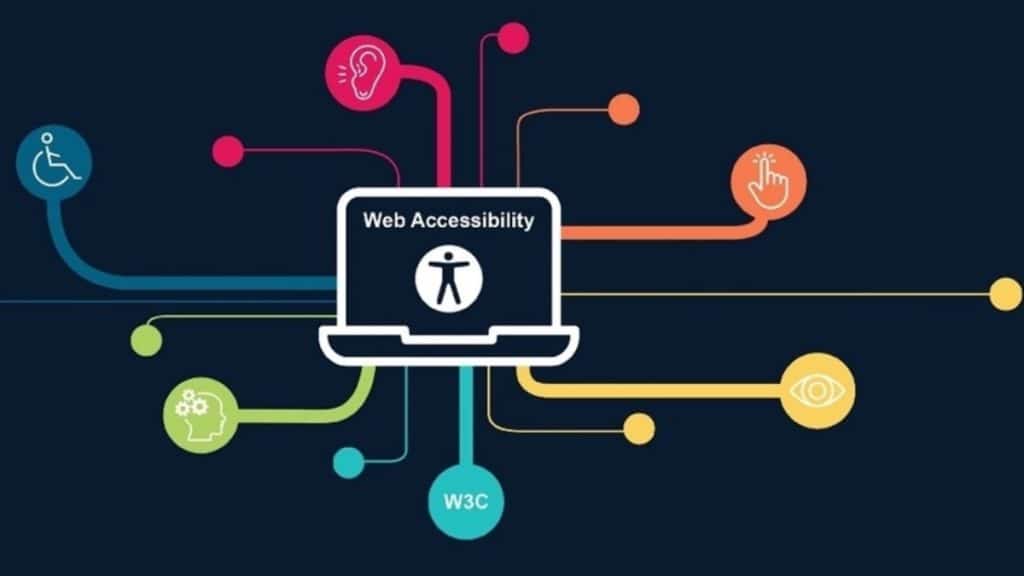When we think of accessibility in web design, the focus often leans toward inclusivity and compliance. But accessibility isn’t just the right thing to do—it’s also good business. In a world where everyone is online, creating a website that works for almost all users, regardless of their abilities, expands your audience, enhances your reputation, and boosts your bottom line. Let’s dive into the top ways to make websites more accessible and why it matters for web design and business success.
DIY Web Design Falls Short on Accessibility
The rise of DIY web design platforms might make it tempting to cut costs and create your own website. But what many don’t realize is that these platforms often overlook accessibility, leaving you with a site that’s functional for some but frustrating—or even impossible—to navigate for others. This not only alienates potential customers but also puts your business at risk of serious legal consequences.
The hidden pitfalls of DIY web design include a lack of expertise in accessibility standards. Features like keyboard navigation, screen reader compatibility, and appropriate color contrast often require specialized knowledge to implement effectively. Without these, your website could unintentionally exclude a significant portion of your audience. Investing in professional design ensures that accessibility is baked into your site from the ground up, benefiting both your users and your business.
Can a Web Design Agency Help With Accessibility?
For businesses serious about reaching a wider audience, partnering with a headless WordPress website design agency is a fantastic idea. These agencies specialize in creating sites that prioritize accessibility while delivering sleek, modern designs. Accessibility isn’t just an add-on; it’s an integral part of their process.
A skilled agency can implement advanced features like semantic HTML, ARIA labels, and responsive layouts that cater to diverse users. They also have the expertise to test your site across various assistive technologies, ensuring compatibility with screen readers, keyboard navigation, and more. By hiring a professional agency, you’re not just improving accessibility—you’re showing your audience that you value inclusivity and are willing to invest in their experience. That’s a message that resonates with today’s socially conscious consumers.
Color Contrast Matters for Accessibility
Color contrast might seem like a small detail, but it has a big impact on accessibility. For users who have different visual impairments, including color blindness or low vision, insufficient contrast can make text and images difficult to see, leading to frustration and lost business. Web Content Accessibility Guidelines (WCAG) offer minimum contrast ratios to make sure the text is legible against its background.
For web designers, getting color contrast right means balancing aesthetics with functionality. Tools like contrast checkers can help ensure that your site’s design choices meet accessibility standards without sacrificing visual appeal. When your website is easy to read for everyone, you not only improve user experience but also create a more inclusive space that welcomes all visitors.
Keyboard Navigation Makes Websites More Accessible
Not all users rely on a mouse or touchpad to navigate a website. For individuals with motor disabilities, keyboard navigation is essential. This means your website should be fully functional using only a keyboard, with clear focus indicators that guide users through menus, links, and interactive elements.
Ensuring keyboard accessibility involves more than just technical fixes—it requires thoughtful design. Tab order should follow a logical sequence, and interactive elements like dropdown menus should expand and collapse with keyboard commands. By making these adjustments, you’re not only meeting accessibility standards but also creating a smoother experience for all users, including those who prefer keyboard shortcuts.
Descriptive Labels are Important for Screen Readers
For users who rely on various screen readers, descriptive labels and alternative text (alt text) are critical for understanding your website’s content. Screen readers convert text to speech, allowing visually impaired users to navigate your site. Without accurate labels, important information can be lost, leaving users confused and disconnected.
To improve accessibility, web designers should include clear, concise alt text for images, along with ARIA attributes for interactive elements. For example, a button labeled “Click Here” should instead describe its function, like “Submit Form” or “Learn More About Our Services.” These small changes make your site more intuitive for screen reader users, enhancing their experience and increasing the likelihood that they’ll engage with your content.
Mobile Optimization Ties Into Accessibility
Since it’s true that mobile devices account for the majority of web traffic, mobile optimization is no longer optional—especially when it comes to accessibility. A mobile-friendly website ensures that users with disabilities can access all your content easily, regardless of the device they’re using. This includes features like larger touch targets, responsive layouts, and clear navigation menus.
For designers, mobile accessibility means testing your site on many different devices and screen sizes. It also involves ensuring that interactive elements, like forms and buttons, are easy to use on smaller screens. When your site works seamlessly on mobile, you’re not just catering to a broader audience—you’re showing that your business is forward-thinking and user-focused.
